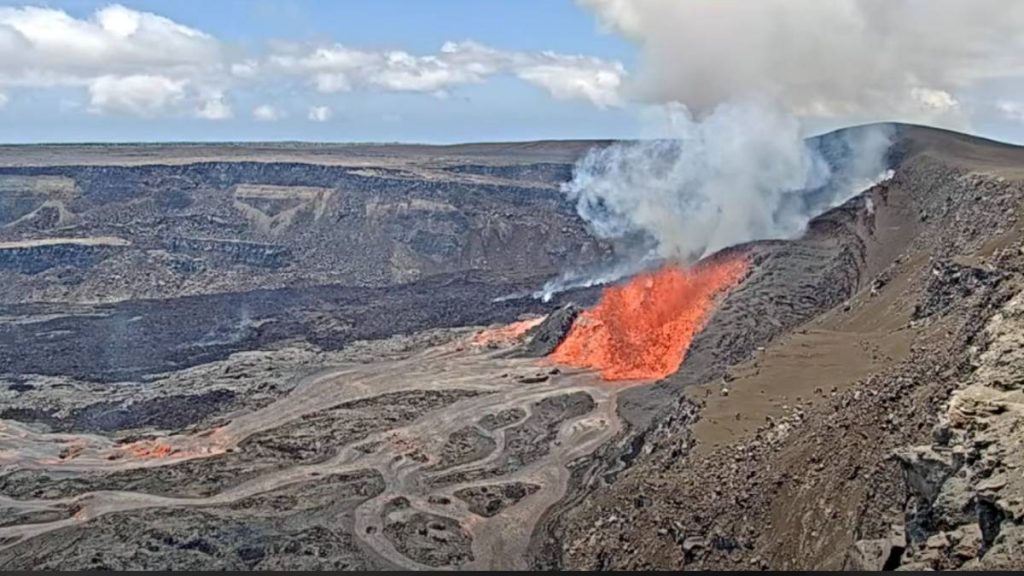Episode 29 of the ongoing Halemaʻumaʻu eruption lasted 13 hours
Episode 29 of the ongoing Halemaʻumaʻu eruption ended abruptly around 6:35 p.m. on Sunday after over 13 hours of continuous lava fountaining.

The north vent stopped erupting around 6:35 p.m., marking the end of the episode; the weakly-active south vent had stopped erupting several hours earlier.
Lava fountains did not exceed 330 feet during this episode, as most lava was sprayed laterally within Halemaʻumaʻu crater. An estimated 1.8 billion gallons of lava erupted during the episode, covering approximately 80% of the crater floor.
Precursory low-level activity for Episode 29 of the ongoing Halemaʻumaʻu eruption began around 3:55 a.m. Sunday, July 20, with spattering at the north vent, followed shortly after by dome fountains and lava overflows starting around 4:11 a.m.
Visitors to Hawaiʻi Volcanoes National Park can expect the spatter deposits and lava flows from this episode to exhibit slow movement and incandescence within the southern part of Kaluapele as they cool and solidify over the coming days.
Volcanic gas emissions have greatly decreased since fountaining stopped, and the sulfur dioxide emission rate will likely range from 1,200–1,500 tons per day during the new eruptive pause.
The Uēkahuna tiltmeter recorded approximately 18.5 microradians of deflationary tilt during this episode. The end of the episode was coincident with a rapid change from deflation to inflation at the summit and a decrease in seismic tremor intensity.
All eruptive activity is confined to the Halemaʻumaʻu crater within Hawaiʻi Volcanoes National Park, and airports in Hawaiʻi County were not affected by the activity. No changes have been detected in the East Rift Zone or Southwest Rift Zone.
Three Kīlauea livestream videos can be watched on the U.S. Geological Survey Youtube account.
Most episodes of Halemaʻumaʻu lava fountaining since Dec. 23, 2024, have continued for around a day or less and have been separated by pauses in eruptive activity lasting at least several days. A timeline of eruptive episodes is available online.



